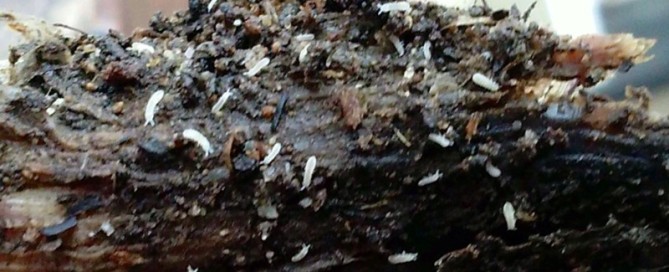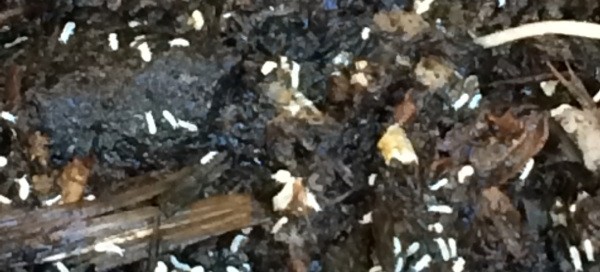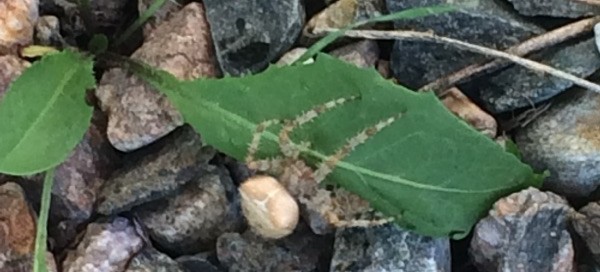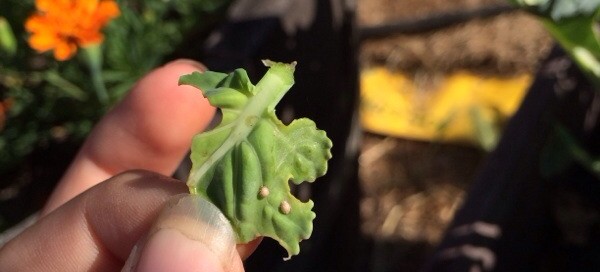Springtail
These insects look very much like Springtaillarvae (in the Order Collembola). There are several different species. Its hard to classify these insects as either pests or beneficials because they can be damaging, but they also can consume plant pathogens and aid in the breakdown of organic matter. They carry their tails under tension beneath their bodies. When threatened, they "pull the trigger" and their tails launch them into the air and away from the disturbance/danger. Some kinds cause trouble with crops, but most kinds do more good than harm. They prefer moist environments and may become abundant in soils with excessive organic matter. There's more info at this web page. http://www.ipm.ucdavis.edu/PMG/PESTNOTES/pn74136.html



